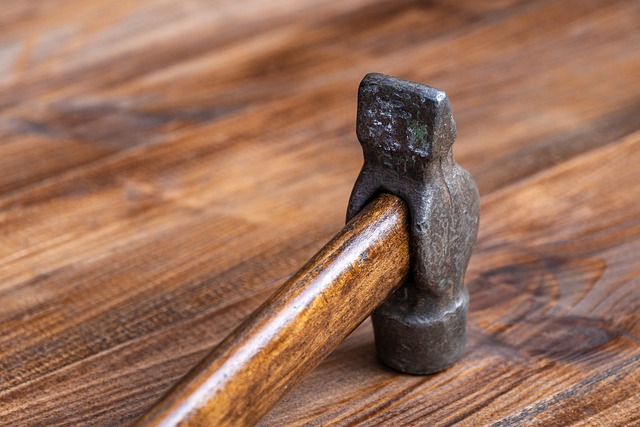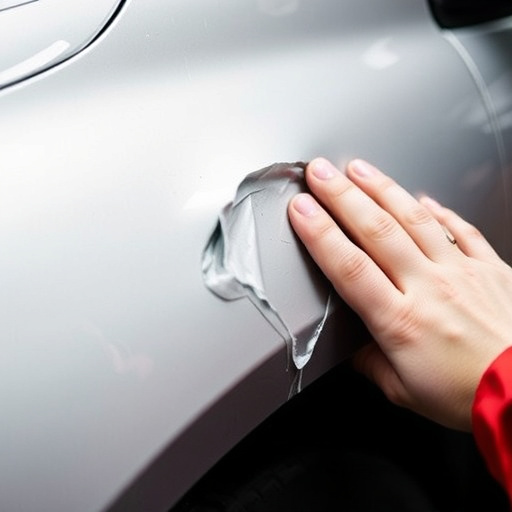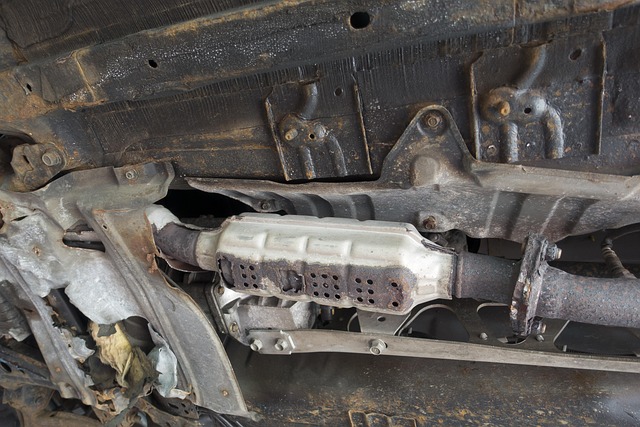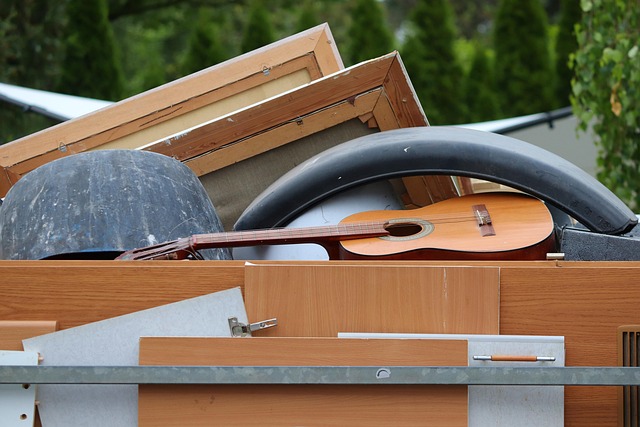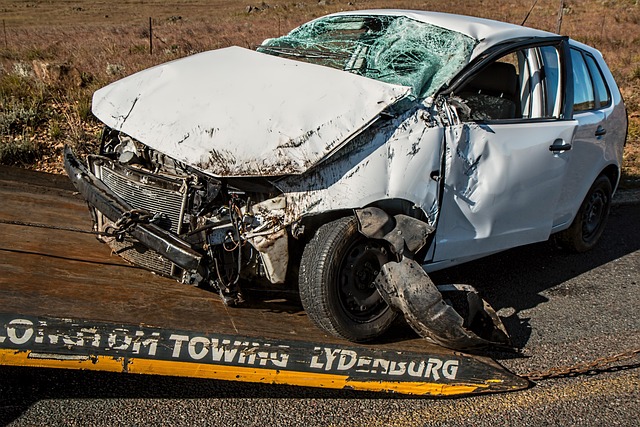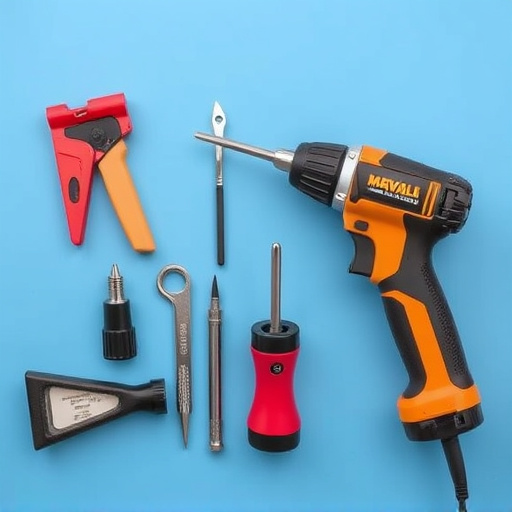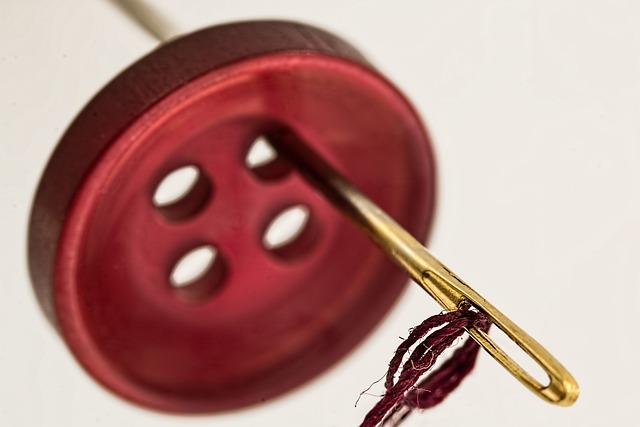Mercedes carbon fiber parts, prized for their lightweight strength, demand specialized care after damage. Repairs require meticulous techniques and tools due to carbon fiber's sensitivity to impacts. The process includes inspection, removing debris, filling cracks/chips, reinforcing, and polishing to restore original condition while preserving vehicle value. Post-repair maintenance with pH-neutral soap, polishing, and waxing is crucial for protecting against environmental damage.
Mercedeses are known for their sleek, high-end design, often featuring carbon fiber components. However, these delicate parts are susceptible to damage from collisions or impacts. This article guides you through repairing your Mercedes carbon fiber parts effectively. We’ll explore the nature of these materials, offering a step-by-step repair process and essential maintenance tips to ensure your vehicle’s aesthetics and structural integrity remain intact after any incident. Learn how to tackle repairs and protect your Mercedes’ distinctive carbon fiber elements.
- Understanding Mercedes Carbon Fiber Parts and Their Vulnerability
- The Step-by-Step Process of Repairing Damaged Carbon Fiber
- Tips for Maintaining and Protecting Your Mercedes Carbon Fiber After Repair
Understanding Mercedes Carbon Fiber Parts and Their Vulnerability

Mercedes carbon fiber parts, a staple in modern vehicle design for their lightweight and robust properties, are especially prevalent in high-end models like Mercedes-Benz. However, this advanced material is not invincible. Unlike traditional metal, carbon fiber is susceptible to damage from impacts and collisions due to its fragile nature. Even minor dents or scratches can compromise the structural integrity of these parts, which, if left unrepaired, could lead to more severe issues.
Understanding the unique characteristics of Mercedes carbon fiber parts is crucial when considering repair options. Unlike auto bodywork or even auto detailing, repairing carbon fiber involves precise techniques and specialized tools to ensure minimal impact on the part’s performance and aesthetics. The process often entails careful removal of damaged areas, reinforcement with composite materials, and meticulous finishing to restore the part to its original condition—all while maintaining the vehicle’s overall value in the market.
The Step-by-Step Process of Repairing Damaged Carbon Fiber

Repairing damaged Mercedes carbon fiber requires a meticulous approach to ensure the vehicle’s original aesthetic and structural integrity. The process begins with a thorough inspection of the affected area, identifying the extent of the damage. This involves examining the carbon fiber for cracks, chips, or delaminations—a common issue where the fiber layers separate. Once the damage is assessed, the repair technician can source the appropriate Mercedes carbon fiber parts to match the vehicle’s specifications.
The actual repair entails several steps: first, carefully removing any loose debris and preparing the surface. This is crucial for a successful repair and often involves using specialized tools to clean and decontaminate the area. Next, the technician fills in chips or small cracks with an appropriate composite filler, allowing it to cure according to the manufacturer’s guidelines. For more extensive damage, such as delaminations, a layer of carbon fiber reinforcement tape may be applied before building up the damaged area with fresh carbon fiber sheets, ensuring a seamless finish. Finally, the repair is sanded and polished to match the vehicle’s smooth surface, often requiring expert auto detailing skills to achieve a flawless result, much like fixing a car scratch repair.
Tips for Maintaining and Protecting Your Mercedes Carbon Fiber After Repair

After successfully repairing your Mercedes carbon fiber, proper maintenance and protection are crucial to preserving its sleek appearance. Regular washing is essential, but opt for a gentle, pH-neutral soap designed for fine automotive finishes to avoid damaging the repaired area. Avoid using harsh chemicals or abrasive cleaning materials that could leave scratches or affect the restoration.
Additionally, consider an auto detailing routine to keep your Mercedes carbon fiber looking its best. This includes regular polishing and waxing to create a protective barrier against environmental factors like UV rays, bird droppings, and tree sap—common culprits for car scratch repair. Remember, preventing future damage is key; so, be proactive with maintenance to ensure your repaired Mercedes carbon fiber parts remain in pristine condition.
Repairing Mercedes carbon fiber parts after an impact or collision is a specialized process that, when done correctly, can restore your vehicle to its pre-accident condition. Understanding the vulnerability of these advanced materials and following a meticulous step-by-step approach are key to achieving a high-quality repair. By implementing proper maintenance and protection techniques, you can ensure your Mercedes’ carbon fiber parts remain in top condition, enhancing both the vehicle’s aesthetics and overall value. Remember, when it comes to Mercedes carbon fiber parts repair, expertise and attention to detail make all the difference.
